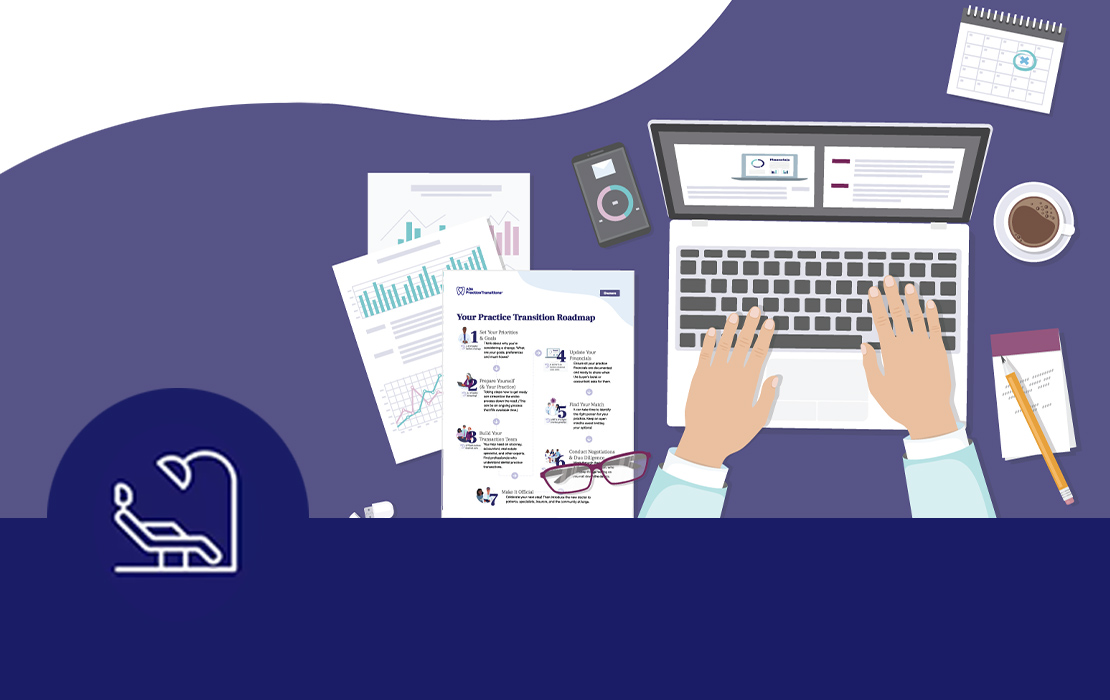You have always pictured yourself as the owner of your own practice, but right now, you are up to your eyeballs in student debt and you simply have no idea where to start. If this resonates with you, let me assure you that you CAN be an owner — and you easily do it within 5 years of graduation. You can even begin preparing before graduation by following these (relatively) easy steps.
The first step in your buy-a-practice plan should be talking to (at least) three different banks. Finding the right lender is crucial, as they can make or break your transaction.
The strength of your application and the practice stats will dictate how much you are able to borrow, so engage the lenders early in the process. They will also advise you on what you can do to strengthen your application so that when you find the perfect practice, you’re more likely to put your name on the building.
Across the board, dental lenders agree on some key things you can do to prepare yourself for a purchase.
1. Keep tabs on your credit score
If your credit score is under 680, the chances of being able to obtain financing are slim. Get in the habit of checking your credit periodically through one of the many free services, such as the government’s AnnualCreditReport.com. With identity theft on the rise, it’s better to catch any potential problems early so you can correct them now rather than while you’re trying to close a sale.
Talk to a financial professional if you need help understanding your credit report or want advice on improving your credit.
2. Know your production — and work to improve it
To obtain financing, you will need to prove to your bank that you are capable of producing enough dentistry to drive the revenue necessary to service the loan.
The easiest way to do this is to run a monthly production report. As an added bonus, you can also use this to confirm that you are being paid appropriately!
When this type of report isn’t readily available, many banks use formulas to ‘back into’ your productivity. For example, if you are paid a percentage of production, they can use your pay to calculate your production. (This is why it’s so important that you understand how you’re currently getting paid — learn about the different methods of associate pay.)
The easier you can make it for a bank to calculate, the better. Be prepared to show your bank several months’ reports to demonstrate your production trends.
Ideally, you will be able to show that you are improving your production over time. Look for ways to increase efficiencies within your current schedule by utilizing dental auxiliaries where you feel comfortable doing so. For example, do you generally take the time to review post-op instructions with each patient? Do you place the topical (and wait for it to take effect)? A well-trained staff can save you minutes per appointment — and those minutes add up, giving you the ability to add additional procedures!
3. Live below your means
This one can be tough, especially if you scrimped your way through school and now want to treat yourself to a new car, house, or big vacation.
You don’t need to deny yourself completely, but you should be saving at least 10% of your income. Craft a budget that allows you to do what you want without breaking the bank. Many articles on the FIRE (Financial Independence, Retire Early) lifestyle have tips on reframing your thinking to live comfortably on less while avoiding lifestyle inflation. See how two dentists pursuing FIRE saved $1 million in 8 years while becoming debt free.
Lenders want to see that you are capable of budgeting your personal finances, as they know that that same discipline will carry over to your business and ensure you can repay your loan.
4. Don’t add to your student loans
Many would-be buyers wonder if they’re better off paying only the minimum on their student loans so they can build up a down payment on a practice. However, make sure your payments cover at least the interest and a bit of principal — otherwise, you will be inadvertently increasing your debt over time!
Do the research to determine what your loan servicer’s “minimum payment” actually covers. Failure to check this out could push you into negative amortization, where your debt actually INCREASES while you are paying your loans. Learn more about options for paying down your student loans through additional payments or refinancing.
5. Understand interest rates
In the 1980s, practice loans were often financed with rates well into the teens. Today, interest rates can run under 5%. Even though inflation will affect those rates in the coming months, it’s still a great time to purchase a practice.
Talk to potential lenders about their rates and learn how rate fluctuations will affect your monthly payments. You can also ask at what point in the process you can “lock in” the rate for your purchase.
Yes, you can purchase a practice!
If you can manage these five actions, you can indeed purchase a practice, even if you have student loan debt. The key is to be organized and prepared — and to get the guidance you need from the right professionals.
